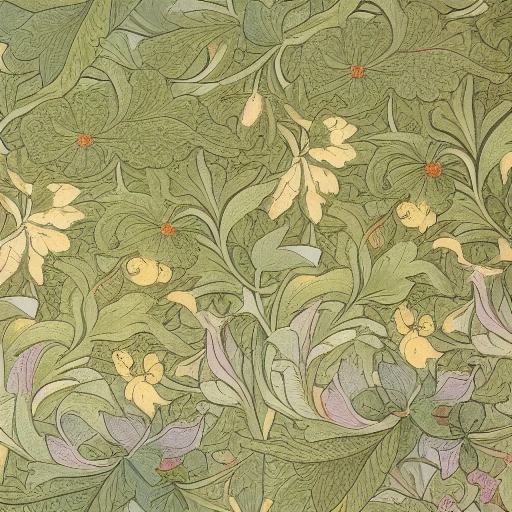Generate images with prompt
Here is the prompt generating the image above: “a close up of a wallpaper with flowers and leaves, a digital rendering by William Morris, flickr, arts and crafts movement, william morris style, style of william morris print, art nouveau wallpaper”
The prompt describes a close-up view of a wallpaper design featuring flowers and leaves. It specifies that the design is a digital rendering by William Morris, who was a leading figure in the Arts and Crafts movement of the late 19th century. The prompt mentions the “William Morris style,” suggesting that the generated image should emulate his distinctive aesthetic, which often featured intricate floral and nature-inspired motifs.
The prompt also references “art nouveau wallpaper,” indicating that the generated image should incorporate elements of the art nouveau style, which was popular during the same time period and also frequently featured organic forms and ornate, flowing designs.
In terms of how the individual parts influence the generated image, the mention of William Morris and the Arts and Crafts movement suggests an emphasis on handcrafted quality and attention to detail. The emphasis on flowers and leaves in the design informs the overall aesthetic and color scheme of the image.
Using of Plants in Art Nouveau
In Art Nouveau, the use of plants and organic forms is a defining characteristic of the style. The artists were inspired by the natural world and sought to integrate it into their work.
By filling the background with plants, they were able to create a sense of unity between the subject and the environment, blurring the boundary between the two. This created a harmonious and balanced composition, which was a key aspect of Art Nouveau aesthetics.
Additionally, the use of a full and detailed background was a way to showcase the artist’s skill and attention to detail.
Composition of the pattern in the images
The composition of an image refers to the arrangement of visual elements within it. In the context of AI-generated artwork, this can involve using algorithms to control the placement, size, and shape of various components in the image.
One way that AI can control the composition of an image is through the use of generative adversarial networks (GANs). GANs involve two neural networks: one that generates images and one that evaluates them. The generator network creates candidate images, while the evaluator network assesses their quality. Through this process, the generator learns to create images that are more and more convincing, according to the standards set by the evaluator.
Other techniques that AI can use to control composition include clustering, which involves grouping similar elements together, and data-driven approaches that use statistical analysis to identify patterns and relationships in the image. Overall, the precise methods used will depend on the specific algorithms and models employed by the AI system in question.
In the case of a pattern full of plants in the Art Nouveau style, the AI may use a set of rules or guidelines to determine the placement and density of the foliage. These rules could take into account factors such as the size of the canvas, the desired level of complexity, and the overall aesthetic goals of the artwork.


